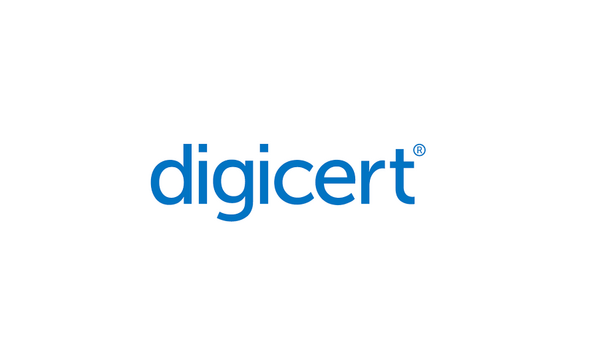Growth is accelerating in the smart cities market, which will quadruple in the next four years based on 2020 numbers. Top priorities are resilient energy and infrastructure projects, followed by data-driven public safety and intelligent transportation.
Innovation in smart cities will come from the continual maturation of relevant technologies such as artificial intelligence (AI), the Internet of Things (IoT), fifth-generation telecommunications (5G) and edge-to-cloud networking. AI and computer vision (video analytics) are driving challenges in security and safety, in particular, with video management systems (VMSs) capturing video streams and exposing them to various AI analytics.
Adoption of disruptive technologies
“Cities are entering the critical part of the adoption curve,” said Kasia Hanson, Global Director, Partner Sales, IOT Video, Safe Cities, Intel Corp. “They are beginning to cross the chasm to realise their smart city vision. Cities are taking notice and have new incentives to push harder than before. They are in a better position to innovate.”
“Safety and security were already important market drivers responsible for adoption of AI, computer vision and edge computing scenarios,” commented Hanson, in a presentation at the Milestone Integration Platform Symposium (MIPS) 2021. She added: “2020 was an inflection point when technology and the market were ripe for disruption. COVID has accelerated the adoption of disruptive technologies in ways we could not have predicted last year.”
Challenges faced by cities
Spending in the European Union on public order and safety alone stood at 1.7% of GDP in 2018 Providing wide-ranging services is an expanding need in cities of all sizes. There are currently 33 megacities globally with populations over 10 million. There are also another 4,000 cities with populations over 100,000 inhabitants. Challenges for all cities include improving public health and safety, addressing environmental pressures, enabling mobility, improving quality of life, promoting economic competitiveness and reducing costs.
Spending in the European Union on public order and safety alone stood at 1.7% of GDP in 2018. Other challenges include air quality – 80% of those living in urban areas are exposed to air quality levels that exceed World Health Organization (WHO) limits. Highlighting mobility concerns is an eye-opening statistic from Los Angeles in 2017: Residents spent an average of 102 hours sitting in traffic.
Smart technology
“The Smart City of Today can enable rich and diverse use cases,” says Hanson. Examples include AI-enabled traffic signals to help reduce air pollution, and machine learning for public safety such as real-time visualisation and emergency response. Public safety use cases include smart and connected outdoor lighting, smart buildings, crime prevention, video wearables for field agents, smart kiosks and detection of noise level, glass breaks and gunshots.
Smart technology will make indoor spaces safer by controlling access to a building with keyless and touchless entry. In the age of COVID, systems can also detect face mask compliance, screen for fever and ensure physical distancing.
 |
| 2020 was an inflection point when technology and the smart cities market were ripe for disruption, Kasia Hanson told the MIPS 2021 audience. |
Video solutions
Video workloads will provide core capabilities as entertainment venues reopen after the pandemic. When audiences attend an event at a city stadium, deep learning and AI capabilities analyse customer behaviours to create new routes, pathways, signage and to optimise cleaning operations. Personalised digital experiences will add to the overall entertainment value.
In the public safety arena, video enables core capabilities such as protection of people, assets and property, emergency response, and real-time visualisation and increased situational awareness. Video also provides intelligent incident management, better operational efficiency and faster information sharing and collaboration.
Smart video strategy
Intel and Milestone provide video solutions across many use cases, including safety and security Video at the edge is a key element in end-to-end solutions. Transforming data from various point solutions into insights is complicated, time-consuming and costly. Cities and public venues are looking for hardware, software and industry expertise to provide the right mix of performance, capabilities and cost-effectiveness.
Intel’s smart video strategy focuses around its OpenVINO toolkit. OpenVINO, which is short for Open Visual Inference and Neural network Optimisation, enables customers to build and deploy high-performing computer vision and deep learning inference applications.
Intel and Milestone partnership – Video solutions
“Our customers are asking for choice and flexibility at the edge, on-premises and in the cloud,” said Hansen in her presentation at the virtual conference. “They want the choice to integrate with large-scale software packages to speed deployment and ensure consistency over time. They need to be able to scale computer vision. Resolutions are increasing alongside growth in sensor installations themselves. They have to be able to accommodate that volume, no matter what causes it to grow.”
As partners, Intel and Milestone provide video solutions across many use cases, including safety and security. In effect, the partnership combines Intel’s portfolio of video, computer vision, inferencing and AI capabilities with Milestone’s video management software and community of analytics partners.
Given its complex needs, the smart cities market is particularly inviting for these technologies.








